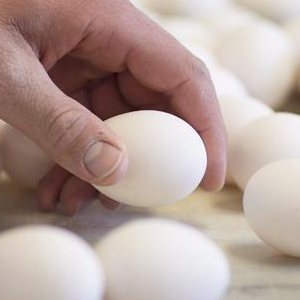I never thought I’ hear myself say this, much less write it on the Foodernet where it will persist for-ever… But I have to admit there is at least one way in which Canada’s supply management system for regulating the food chain doesn’t suck…
What it is
They call it supply side management, as opposed to traditional, ‘natural’ supply and demand. Most of us understand the basics, at least, of the traditional system. Some say they understand supply man-agement. But in reality, very few really do…
When nature regulates the system
Left to itself, a developed consumer economy will orient itself in the traditional supply-and-demand configuration. Simply put, if consumers want something like milk or eggs, farmers will produce the raw materials and middle men will package and/process the stuff.
When it comes time to go that last mile in the food chain, the retail price sets itself, based on the plentifulness or scarcity of the ‘commodity’. The dynamics can be viewed two ways. The first is, the more plentiful something like eggs is, the lower the price should be – as long as the demand remains the same over time. And the other side of the coin stipulates that – therefore – the less there is avail-able, the higher the price will be.
Another way to look at it is, if there are lots of folks who want eggs, but there aren’t enough eggs to fill the overall demand, consumers will compete with each other. It’s sort of like an auction. The fewer eggs there are, and/or the more people there are who want them, the more folks will pay per egg (or per dozen, or whatever) to make sure they get the eggs they want or need. That’s called a sellers’ market. The sellers ‘win’. And some consumers who want eggs don’t get them.
The opposite is also true. The more eggs there are – assuming the demand remains ‘static’ – the harder egg producers and retailers will have to work, or compete with one another, to sell all the eggs they collectively have. Those who offer their eggs at the lowest price are most likely to sell the most eggs. That’s called a buyers’ market. The buyers ‘win’. And some egg sellers get stuck with eggs no-body wants.
When government or suppliers regulate
Supply-side management is the opposite, in most respects, of natural supply and demand. The gov-ernment works with the producers and sellers to set a ‘guaranteed selling price’ for the eggs. That price is regularly adjusted to take into account in changes nature or the economy throws at it. The goal is to ensure the producers get the revenues they need to run their operations and make an agreed-on profit.
A production quota system ensures that there is never a serious excess or shortage of eggs. The overall result is, consumers can always get eggs, no matter what happens in the economy or the environment. And the price of those eggs remains relatively stable. Alas… That stable price remains relatively high compared to what it might sometimes be under a traditional supply-and-demand system.
That’s called a managed market. Nobody loses, but nobody really wins, either. But there are always eggs available for those who want or need them. And the price remains fairly predictable and stable. When the government is supervising it, it’s called market stabilisation. When the private sector con-trols it, it’s called ‘price fixing’…
My take
The US operates under the supply-and-demand system, while Canada operates under supply man-agement.
In the US, when there are plenty of eggs, the price goes down and consumers ‘win’. But when climate change or avian flu make eggs scarce, the price goes up. Both farmers and consumers stand to lose.
But, in both cases, we got the system that the majority of voters told the powers that be they wanted.
My questions to you:
Which system do you prefer? Self-regulating, or government-regulated?
Which do you think is fairer?
Which dynamic is more important to you? Being able to count on a stable supply of eggs at a stable price?
Or being able to cash in on occasional shifts in price resulting from the natural mechanics of supply and demand?
Muse on that…
~ Maggie J.


